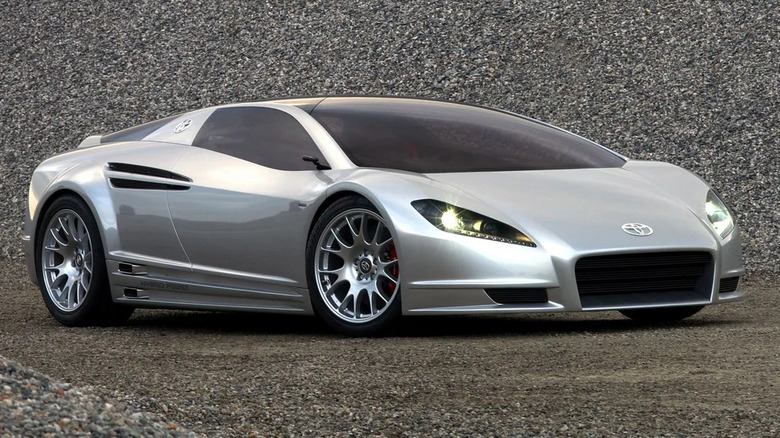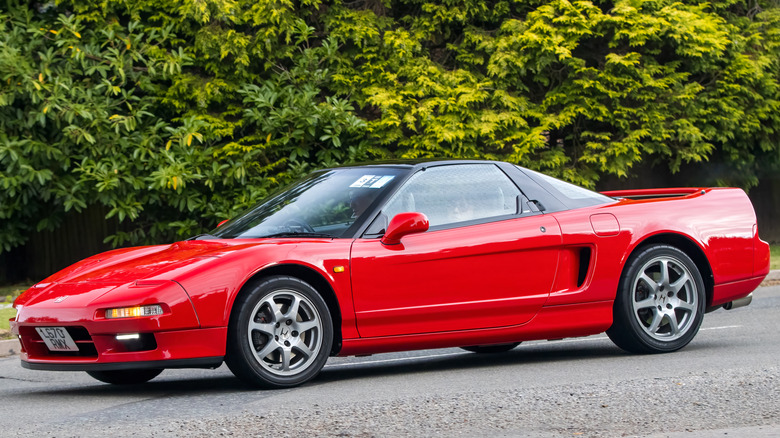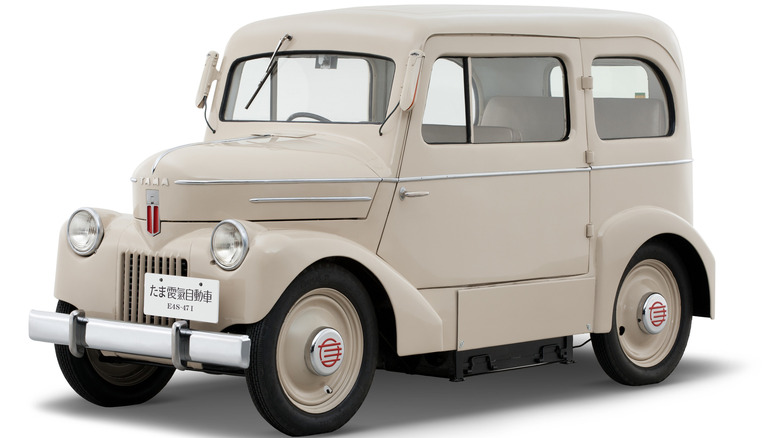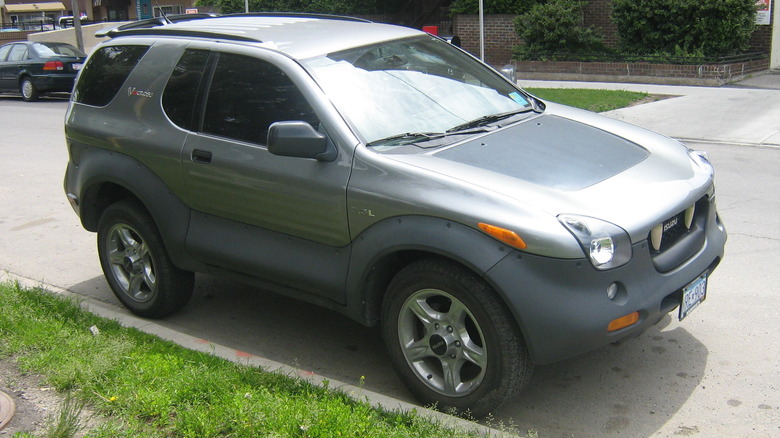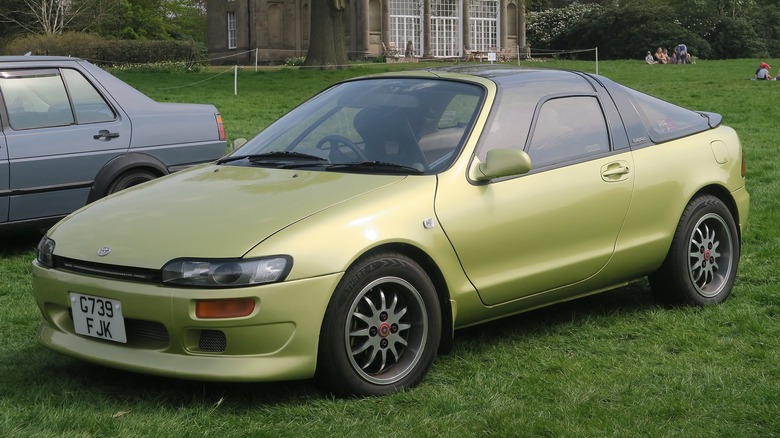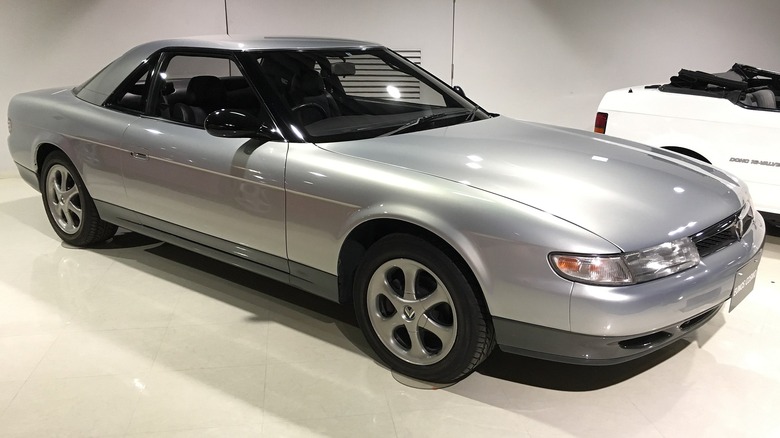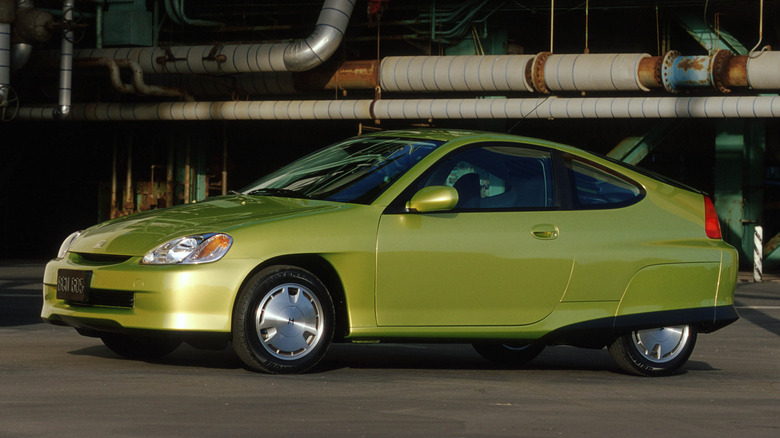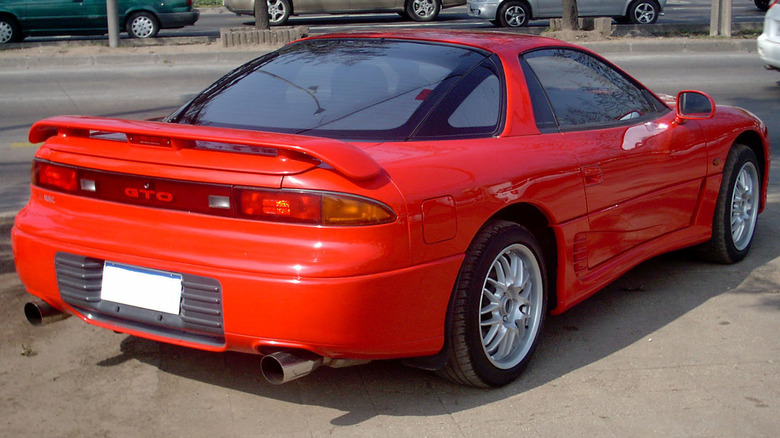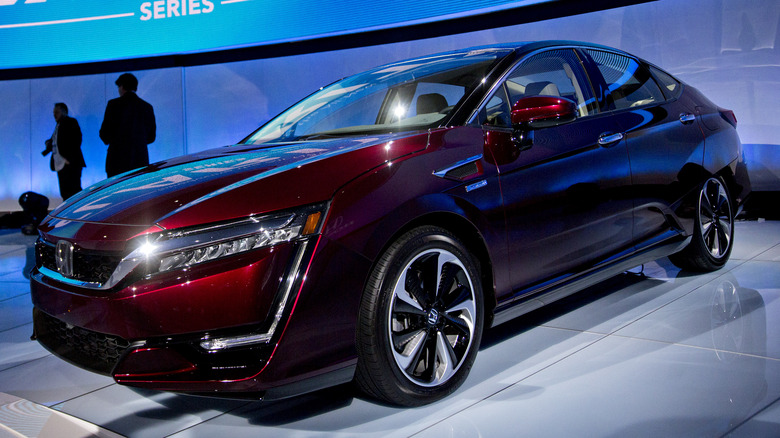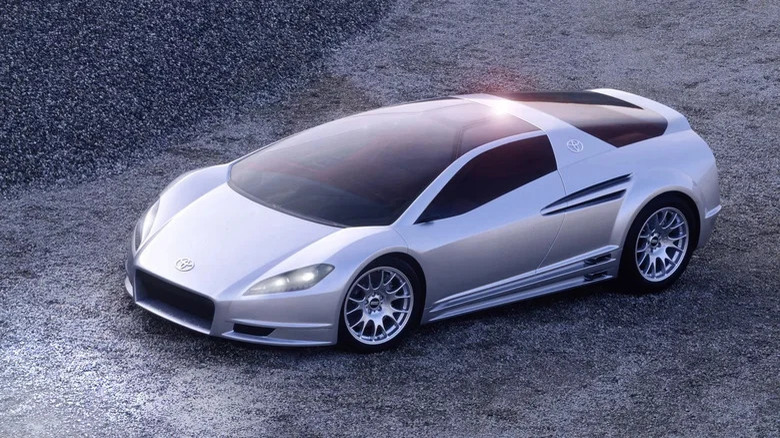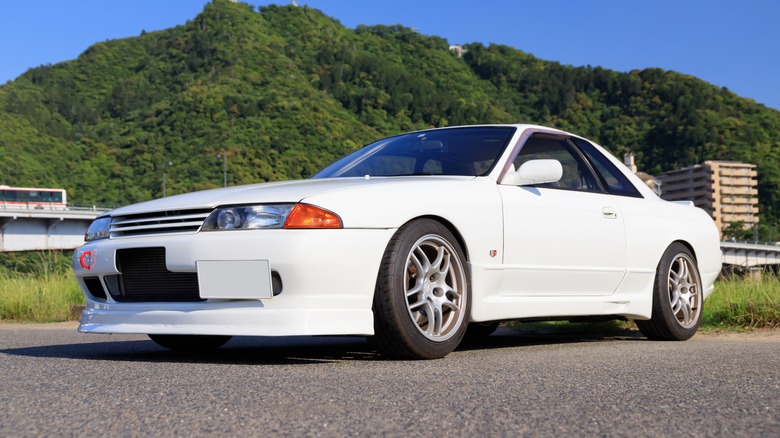10 JDM Cars That Were Ahead Of Their Time
Throughout Japan's golden carmaking era in the '80s and '90s, the country's automakers picked up a reputation for building the most technologically advanced cars in the world. However, they were building futuristic cars long before that, even if some of them have slipped under the radar of most enthusiasts. In fact, the country's history of automotive innovation stretches right back to the years following World War II, when Japan was in the early stages of transforming itself into the economic powerhouse it is today.
From the obscure electric vehicle produced in the late '40s to the legendary tuner car that forced European manufacturers to step up their game in the early '90s, there are many Japanese market cars that could be considered ahead of their time. We've picked out a selection of 10 of the best, covering both the best-known icons and a few forgotten gems that almost no one remembers.
Honda NSX
Prices for the Honda NSX are on the rise as collectors come to realize the importance of the model — which was sold under the Acura brand in North America – in retrospect. Of course, it wasn't always that way. After an initial burst of enthusiasm when the first NSX launched, resale values slumped and even the best examples could be picked up for temptingly affordable prices. That's no longer the case as the rarest and cleanest NSXs now command six-figure price tags, while even lesser examples are far from cheap.
The NSX was ahead of its time in several ways, primarily because of the versatility it offered drivers. It was a fully-featured performance car with the power to keep up with the big players without compromising on reliability or everyday comfort. That was a combination still relatively unheard of at the time, as most supercars still required a significant level of sacrifice to drive regularly. Its unique, futuristic design also turned heads, and its handling was so revolutionary that Gordon Murray famously used the car as the benchmark for the McLaren F1.
The second generation NSX, launched in 2016, has seen a very mixed critical and commercial reception. Sales have been below Honda's expectations, but after spending plenty of time with the car, SlashGear is convinced that the naysayers are wrong about the Acura NSX. Perhaps in a few years, the second generation will also prove to be ahead of its time — just like its predecessor.
Tama Electric
EVs have a much longer history than many people give them credit for. The first EV to hit Japanese roads was the Tama Electric, which was unveiled in 1947, as Japanese companies were just beginning to rebuild after World War II. At the time, oil was in very short supply, but there was a ready supply of electricity as the demand from households was extremely low. The logical response from automakers was to build cars to take advantage of that plentiful supply, and the Tama Electric was just one of several prototype electric vehicles built with support from the Japanese government.
Official tests proved it to be the top performer out of those initial cars, with a range of around 40 miles and a top speed of around 22 mph. Not much, but enough for the Tama to function as a taxi until 1951, by which time oil supplies were increasing and combustion-powered cars were becoming the standard.
With little need to improve EV technology as gas became the go-to source of power, the project was eventually abandoned. Tama would eventually be renamed Prince Motors and merge with Nissan, and today the original Tama Electric is preserved in Nissan's heritage collection.
Isuzu VehiCross
The Isuzu VehiCross might seem like an odd pick for a car that was ahead of its time. After all, its looks left many people scratching their heads when it was unveiled, and it's hardly considered a bastion of great design today. However, the idea behind the SUV was very forward-thinking, even if the execution was far from elegant. Isuzu figured that SUV owners wanted a car that looked sporty, even if that meant sacrificing some practicality. Of course, it still needed to have off-road capability — not just at low speeds but at higher speeds, too.
The VehiCross offered all these things in a car that was also rare by nature, as the molds used to create its panels could only withstand producing around 5,000 to 6,000 examples. Its underpinnings were mostly carried over from the tried-and-tested Trooper, but the bodywork was all-new. It also featured unique shock absorbers with external expansion tanks to better withstand repeated off-road use, being the first production vehicle to feature such a setup.
This helped it fill what Car and Driver called at the time the "purpose-built high-speed desert-racer niche." It's a niche that, with modern dune-bashing factory specials from the likes of Ford and Jeep, is no longer as obscure as it was when the VehiCross first debuted. Sure, the VehiCross' 215 horsepower V6 can't compete with modern rivals in performance terms, but the over-the-top spirit that made the Isuzu a cult hit back then has proved to still be just as appealing today.
[Featured image by Dave_7 via Wikimedia Commons | Cropped and scaled | CC BY-SA 2.0]
Toyota Sera
The Toyota Sera was a small, futuristic sports car sold only in the Japanese domestic market. First unveiled in concept form, the production version hit dealerships in 1990, just as Japan's economic boom was peaking. It was based on the Starlet hatchback, but unlike its everyday counterpart, the Sera featured innovations like gullwing doors, a wrap-around glass cabin, and plenty of optional tech.
Perhaps the most unique option was the ten speaker surround-sound system, which included a dedicated subwoofer in the trunk. The system also made use of the cabin's glass canopy, with certain speakers rotating to bounce sound off a different part of the glass to create an experience supposedly like listening to live music. The car proved a hit at first, but after a couple of years on the market, the Japanese recession had slowed sales down to a fraction of their initial volumes. The Sera was eventually axed in 1995, and as innovative as it was, its unique audio system was never reproduced in any other production model.
However, its dihedral gullwing doors did end up proving to be ahead of the curve. They eventually inspired Gordon Murray, who noticed the car while he was working on the McLaren F1. Murray explained to Car Magazine that he drove past a Sera every day and eventually borrowed one, using its layout as the foundation for the era-defining supercar's gullwing design.
[Featured image by Charles01 via Wikimedia Commons | Cropped and scaled | CC BY-SA 4.0]
Eunos Cosmo
The Cosmo name had been used on a variety of Mazda sports cars since the '60s, but the last car to arrive under the Cosmo badge was sold through Mazda's luxury arm, Eunos. The Eunos Cosmo, like its predecessors, featured a rotary engine under the hood. Two engine variants were available, the 13B and 20B. The larger of the two, the 20B, was the first triple rotor engine to ever feature in a production vehicle, and it was paired with sequential twin-turbos for increased boost across the rev range.
It was also one of Mazda's most luxurious vehicles to date and featured plenty of cutting-edge tech, including one of the first built-in GPS systems. The system was controlled through a touchscreen, and although it was basic by modern standards, it allowed drivers to punch in locations across Japan and was accurate to around 150 feet. This technology was, like any new innovation, expensive and added a significant premium to the already high MSRP of the Cosmo.
During its first few years on sale, buyers could afford the high price, but when the recession hit, sales plunged and the Cosmo was axed. The GPS system, however, quickly became popular elsewhere, and the twin-turbo setup later gained international recognition in the FD RX-7.
[Featured image by Charles01 via Wikimedia Commons | Cropped and scaled | CC BY-SA 2.0]
Honda Insight
The Toyota Prius was the first production hybrid vehicle to hit the mainstream, but the Honda Insight trumps it in many respects, even though it never became as popular. Most importantly for any hybrid, it was significantly more efficient than the Prius, with 70 mpg achievable from its electrically assisted three-cylinder engine. That's a feat that even today's most fuel-sipping hybrids can't achieve -– the top-scoring model in our most efficient cars of 2023 only manages 54 mpg. The Insight is now over 20 years old, yet it still beats anything on the market today by a large margin.
This was in part down to its aerodynamic shape. Honda's engineers went to great lengths to ensure that the car was as slippery as possible, even going as far as partially covering the rear wheels to reduce drag. The interior was also stripped out to save weight, with only the bare necessities and little in the way of creature comforts. The car's laser focus on efficiency above all else was probably the main reason for its lack of commercial success compared to the Prius, but it resulted in fuel efficiency figures that, even two decades on, remain ahead of the pack.
Mitsubishi GTO VR4
Although it was mostly forgotten among the RX-7s, Skyline GT-Rs, and Supras that came to define the era, the Mitsubishi GTO was once a compelling alternative to all of its more famous rivals. Sold as the 3000GT in most export markets, the VR-4 was the top-spec trim, featuring a slew of cutting-edge gadgetry that wouldn't look out of place on the spec sheet of a modern sports car. It boasted four-wheel steering, active front and rear wings that raised at high speeds, and shocks that adjusted based on speed and G-force feedback from the onboard computer.
All of this extra complexity made it a nightmare to work on, and as a result, resale values remained relatively low for a long time. However, much like the Honda NSX, values have risen considerably in recent years as more collectors begin to catch on to just how technologically advanced the car was for its time.
[Featured image by Order_242 via Wikimedia Commons | Cropped and scaled | CC BY-SA 2.0]
Honda Clarity Fuel Cell
At first glance, hydrogen-powered cars seem like an obvious answer to the current climate concerns — they boast similar ranges to modern gas cars, can be refueled in a few minutes, and produce no harmful emissions. However, they're far from a perfect solution. Concerns persist about the environmental impact of leaks and the process of hydrogen production itself, but the biggest issue, for now, is that there's simply not enough refueling infrastructure built to sustain a network of cars.
The Honda Clarity Fuel Cell is one of the latest attempts at marketing a hydrogen car to the masses and went on sale in Japan in 2016. SlashGear drove a Clarity a year later and found it to be, essentially, a decent Honda sedan. That's a good thing because, despite what some automakers seem to think, not all alternative fuel vehicles need to look like they come from outer space. That said, it's not entirely free from awkwardly angular styling, although it's not as ugly as the first generation Toyota Mirai.
The Clarity Fuel Cell was discontinued in 2021 due to low sales numbers, but that's hardly a surprise. After all, the only place in the continental U.S. with hydrogen fueling stations was California, so driving the car out of state was impossible. Work is continuing on improving hydrogen infrastructure across the U.S. and globally, so it seems that the Clarity was simply ahead of its time. For now, its potential remains largely unfilled.
Toyota Alessandro Volta
While the Toyota Alessandro Volta never made it to the production stage, its design proved to be thoroughly ahead of its time. Toyota has a back catalog full of forgotten concept gems, but the Alessandro Volta is arguably one of its best looking. It was a mid-engined hybrid supercar designed by Italdesign in 2004 with the aim of proving that hybrid systems were viable for low-slung performance cars.
The hybrid powertrain in question was a 3.3L V6 adapted from Lexus and Toyota's SUV range, assisted by dual electric motors that provided four-wheel drive. It was said to produce around 400 horsepower –- for context, that put it on par with the Ferrari 360 Modena. It also featured a carbon fiber chassis and gullwing doors to really emphasize the supercar effect.
Unfortunately, it was only ever built as a design showcase, and only one example was ever made. Nonetheless, Toyota nailed the formula that many modern supercars now follow with carbon fiber chassis, hybrid assistance, and four-wheel drive years before those things became commonplace in the segment. Not to mention, thanks to a little help from the Italians, its looks have aged remarkably well compared to many other concepts of the era.
Nissan Skyline R32 GT-R
If there's one JDM car that has become the poster child for being ahead of its time, it's Godzilla. Nissan's benchmark Skyline R32 GT-R first debuted in 1989 and, like all Japanese cars of its time, was officially rated at 276 horsepower thanks to a gentleman's agreement. However, its true output was much higher, and tuners quickly found that they could modify the RB26DETT to produce horsepower figures that were unheard of for a Japanese car at the time.
The GT-R's capabilities stretched to more than just raw power, however. Its Super HICAS four-wheel steering system and ATTESSA E-TS four-wheel drive system were a cut above anything seen on a Japanese car and among the most advanced in the world. In total, over 40,000 examples of the car would be made, with a small number heading to Australia but the vast majority destined for the Japanese market.
In the decades since its debut, the R32 GT-R has become one of the most desirable JDM cars on the collector market, and for good reason. After all, it helped usher in a new era of Japanese engineering dominance, and with the right modifications, can still go toe-to-toe with many modern supercars today.
